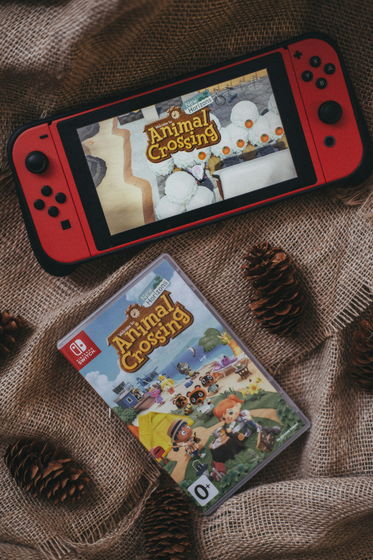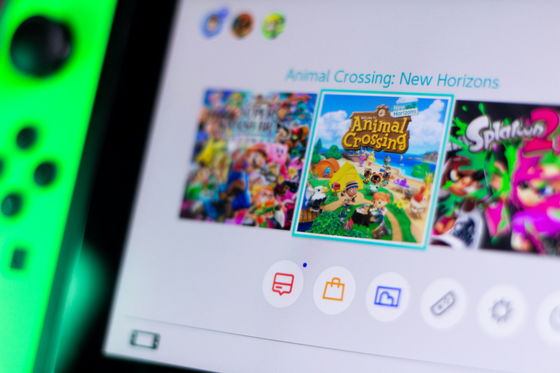Nintendo 'had to change everything' when localizing Animal Crossing overseas

Nintendo's '
Animal Crossing US release required Nintendo 'to change everything' | Polygon
https://www.polygon.com/animal-crossing/484661/animal-crossing-localization-book-excerpt

It is standard for games to soften or change cultural references during the localization process. In particular, the original Animal Crossing was heavily influenced by Japanese culture, and there were several items that even Japanese gamers would not understand. For example, the item 'Kasurinafuku' is an indigo and white outfit worn by several villagers. In Japan, such outfits are called ' Kasuri clothing,' a traditional Japanese textile that originated in the 12th century. In the English version, the 'Kasurinafuku' is translated as ' Static shirt ,' and this is just one of the items that were difficult to localize.
According to Leslie Swan, who was in charge of the localization department for the Animal Crossing series, Takashi Tezuka , known as the producer of the Animal Crossing series, told the localization team, 'If you (Animal Crossing) are to be sold outside of Japan, you have to change everything.' The reason was simply that 'Animal Crossing was a game developed for Japan.'
In fact, Katsuya Eguchi , director of the original Animal Crossing, told Kotaku, 'When we started developing the original Animal Crossing, we had no idea about localizing it for the international market.' Japanese culture was so pervasive that translating the text was only a small part of the job, not just changing the names of the clothes as mentioned above, but also holidays and little jokes that appear in conversations. For Nintendo of America, Nintendo's American subsidiary, localizing the original Animal Crossing was 'the most difficult localization project we've ever worked on.'

Swan, along with other localization staff such as Bill Trinen and Nate Bildorff, was a key member of Treehouse, Nintendo of America's secretive department. Treehouse members consisted of translators, writers, marketers, video producers, etc., and worked on localization behind locked, unmarked doors at Nintendo of America's headquarters. Treehouse's work was generally kept secret even from employees. Even when Treehouse began working on a game localization, the project itself was sometimes canceled before it was even seen by the public.
For a completely new series like Animal Crossing, it's important to keep the localization work secret. According to Torinen, several people from Nintendo of America were involved in the localization of Animal Crossing early on, but Nintendo of America's initial reaction was, 'Yeah, we don't know if we're going to release this game in North America.' Torinen
As Animal Crossing neared completion, Nintendo headquarters again sent a prototype of the game to Nintendo of America. And, 'Treehouse couldn't give up on selling Animal Crossing in the United States,' says Trinen. Recalling that time, Trinen said, 'We fought every day to see who would get the (Animal Crossing) cartridge first.'
While playing Animal Crossing, the Treehouse members came to the conclusion that it should be localized for the American market. Looking back on that time, Tim O'Leary, who was involved in the localization of Animal Crossing, said, 'I went to Leslie and said , 'I can spend a year or two remaking this whole game myself. It's that much fun.''

Typically, when localizing a game, the development team and management discuss 'the possibility of the game being successful in America.' However, this was fundamentally different from the work that previous localization teams had done, such as 'naming Mario's enemies.' Because of this, Swan said that 'no one on the localization team at the time understood' how big a project the Animal Crossing localization project was.
Animal Crossing was released in Japan in the spring of 2001. At the time, Nintendo of America was working on localizing titles like
However, Nintendo headquarters was working on porting Animal Crossing to the Nintendo GameCube. In fact, in a 2001 interview, Tezuka said, 'I was told by people, 'Why didn't you make Animal Crossing for the Nintendo GameCube?''
Animal Crossing Plus , an updated version of Animal Crossing for the Nintendo GameCube, was already in development when Animal Crossing was released, so Treehouse worked with the Japanese development team on localization. Swan says that Animal Crossing's unexpected success in Japan was a big push to embark on the project to localize Animal Crossing Plus.

However, localization work did not begin immediately. Initially, time was given to consider questions such as 'How do we make Animal Crossing more familiar when sold in the United States?' and 'What items and holidays do we need to add or remove?'
Swan explained what the localization process was like: 'We would sit in conference rooms for weeks and just name characters. There would be tons of photocopies of characters and items, and we'd be like, 'Okay, let's name the furniture sets today!''
Treehouse staff still talk about how much harder it was to localize Animal Crossing compared to other projects. Swan said, 'Animal Crossing is so vividly etched in my brain.' 'When I looked out, all of our staff were working on this project. Nate Bildhof was in his hoodie and working at his keyboard for about 12 hours every day.' 'Everyone was just working so hard. But it was a labor of love. I mean, none of us wanted to give it up. We loved every moment of it, but it took a really long time.'
It was important to translate the huge amount of text and to decide which events and items to tweak or change, but the final hurdle was 'accurately conveying the changes to the Japanese development team.' Although the localization team had many people who spoke fluent Japanese, it seems that communication with the Japanese headquarters was not perfect. For example, adding a barbecue grill item to the game required several exchanges between Treehouse and the developers. However, the Japanese design team was not familiar with what a Western barbecue grill was like or what kind of food is usually cooked on a barbecue, so there were many interesting iterations between Treehouse and the Japanese headquarters until the final design of 'grilling kebabs' was reached.

Effective localization isn't just about translating, removing cultural references that aren't understood, or adding American items to the game. Swan notes that good localization means each part of the game has the same impact on Japanese and Western users.
As a concrete example, he cited 'Oyashiro' in the Japanese version of Animal Crossing, which serves as a community center where holidays and events begin. This Oyashiro is a Japanese 'shrine' itself. Shrines have ritual importance, most notably in the New Year when almost everyone visits them for the first time in the New Year. In rural communities like Animal Crossing's small village, the shrines are small but serve as a broader community. Visitors to shrines usually give a 5 yen offering when they visit.
However, the concept of a shrine is surprisingly foreign to Westerners. Although it feels old and strangely religious, it is quite common in Japan, even for non-religious people. So, as an alternative, the localization team replaced the shrine in Animal Crossing with a Western ' wishing well .' A wishing well is a modern cliche with ancient roots from European folklore. While shrines are still used in Japan regardless of religion, in many Western countries people also throw coins into fountains and wells while making wishes. The purpose of the 'Japanese shrine' and the 'Western wishing well' are almost the same, and each is meaningful, so the localization team decided to replace the two.
Of course, there are many cases where the context is completely removed during the localization process, but that's not necessarily a bad thing. For example, the seven kokeshi dolls that appear in Animal Crossing were renamed after female designers involved in the development of Animal Crossing, which is 'a total inside joke.'
One of the biggest changes in localizing Animal Crossing was the holidays. We replaced holidays that exist in Japan but not in the West, such as 'Children's Day,' with other holidays, and we had to adjust for cultural differences even for holidays that are common to both Japan and other countries. For example, in Japan, people visit shrines, buy fortune slips, and eat osechi (traditional New Year's food). However, in America, people celebrate the New Year with a lot of noise, drinking sparkling drinks, setting off fireworks, and declaring their resolutions. Understanding these cultural differences was one of the biggest challenges in the localization process.
In other cases, localization has changed the gender of characters. For example, Grace the giraffe is male in Japan, but female in the overseas version. Similarly, Laurent the camel is male in Japan, but female in the Western version. It is unclear whether these changes are to avoid misunderstandings caused by feminine stereotypes such as 'long eyelashes' and 'flashy, heavy makeup,' or to avoid the idea that 'Nintendo introduces feminine male characters.'
Many other anecdotes about the localization of Animal Crossing are collected in Lewin's book, Animal Crossing.
Amazon.co.jp: Animal Crossing (Boss Fight Books, 33) : Lewin, Kelsey: Fashion

Related Posts:
in Game, Posted by logu_ii







